Brindle Southern Right Whales delights Mossel Bay whale watchers
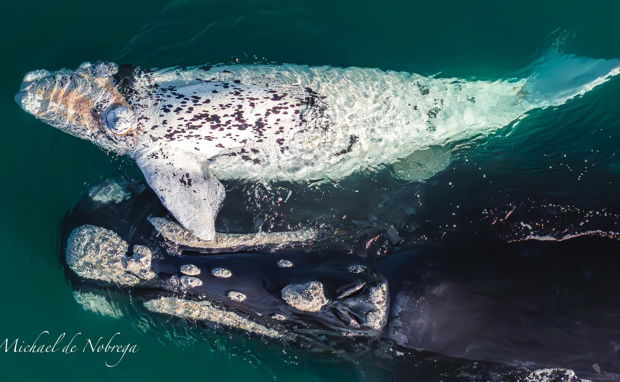
Every year we are lucky to witness the rare sighting of brindle Southern Right calves being born in our bay. Whale watchers are very curious as to why the color differs from the other black-colored whales.
Southern right whales are usually mostly black in colour and were often referred to as “black whales” by open-boat whalers. Most individuals also have a white blaze on their bellies, which can vary in size from a small spot to a large irregularly-shaped marking that may extend up the side of the animal and sometimes even up onto the back. However, southern right whale pigmentation is dependent on a specific gene on the X sex chromosome. The “normal” black colouration that is often seen is caused by the dominant allele (X) of this gene. Individuals born with the combination of alleles XX and XY will have this “normal” pigmentation. However, a few other pigmentation patterns exist as a result of the presence of the recessive allele (x) and other genes.
About 4.8% of adults have separate white blazes on their backs. These whales are born with these blazes and they remain white throughout the whale’s life. These white blazes are found equally on both male and female southern right whales. These blazes are not caused by the gene that results in the normal black colouration, but rather another gene.
There is also a “brindle” pigmentation pattern”. Brindle calves are born almost completely white, with a speckled black collar around their necks and a variable amount of black spotting across their backs. The white pigmentation on these calves gradually darkens with age to become grey in the adults. This pigmentation pattern is caused by the recessive allele (x) of the normal colour gene and occurs in individuals with the combination of alleles xx and xY. This pigmentation pattern can only be produced by the union of a brindled male and a partial grey female (a pigmentation pattern discussed in the following paragraph). About 3.5% of calves are born as brindles and 94% of brindle animals are male.
Lastly, some southern right whales are born with white streaks or flecks on their backs, often in the shape of a V or partial V which points forwards. However, just as in the brindle animals, these markings darken with age so that they appear grey in the adults. Individuals with this particular pigmentation pattern are termed “partial greys”. This pigmentation pattern occurs as a result of the presence of both the dominant and recessive alleles of the gene. This is because the dominant allele is not completely dominant over the recessive allele and this results in a combination of the two pigmentation patterns. This pigmentation can only occur in individuals with the gene combination Xx. Partial grey whales are, therefore, always female and about 10.5% of adult females off South Africa have this pigmentation pattern. About 1.4% of partial grey whales will also possess white blazes on their backs.
These pigmentation patterns are unique to southern right whales, as neither white nor grey dorsal markings, nor “white” calves, have been recorded in North Atlantic right whales and only individuals with white dorsal blazes have been observed in North Pacific right whales.
Photo Credits:
Drone Fanatics SA (Christiaan Stopforth) & Michael de Nobrega

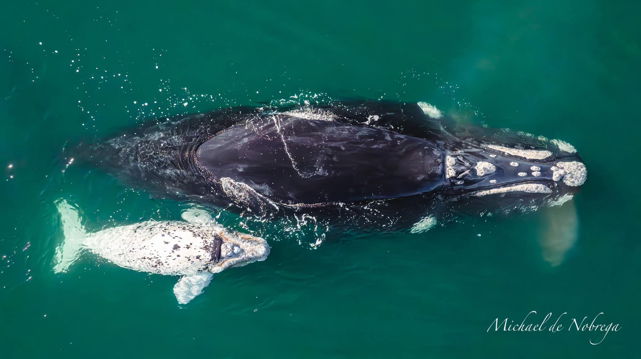
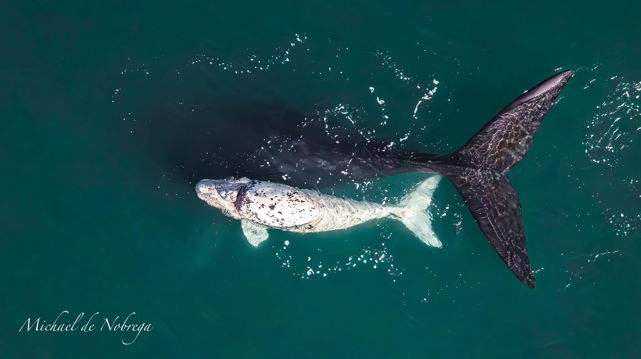

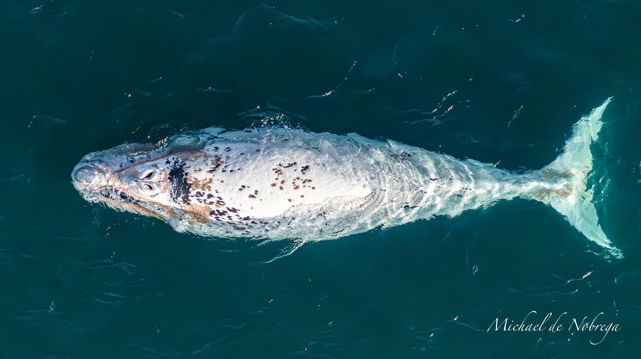

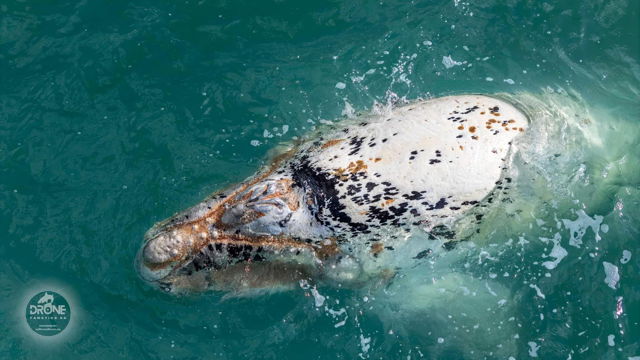
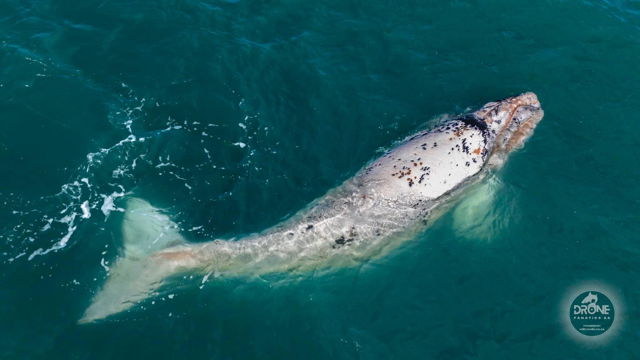









Share This Post